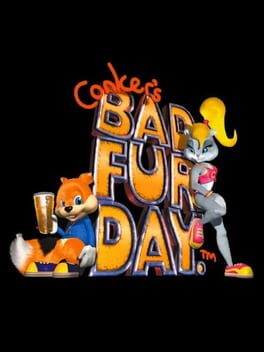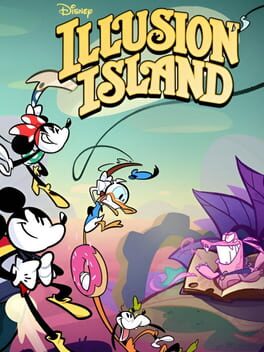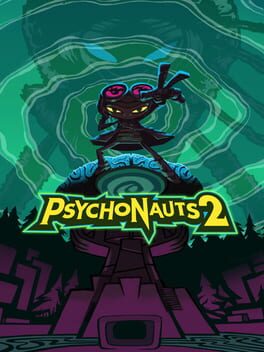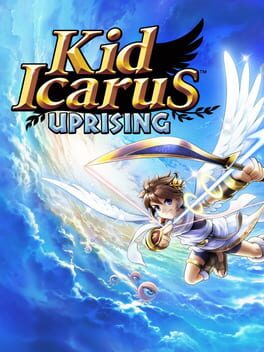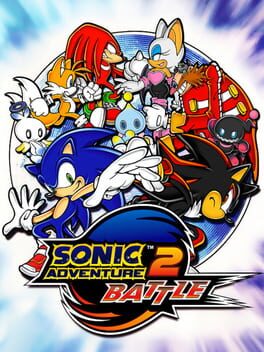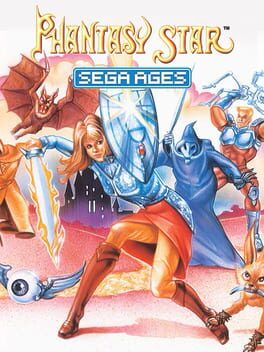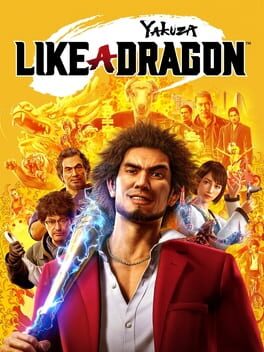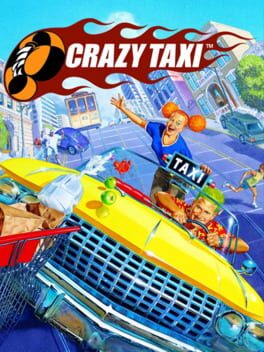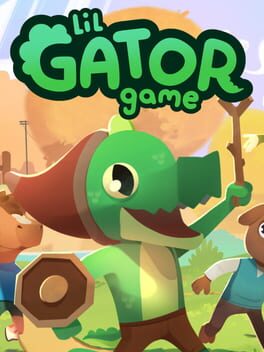ULF
2001
Holy crazy Cogs and diarrhea cows! it's gonna be one of those days.
And what a day that was! It is Conker's Bad Fur Day!
A delightful journey of vulgarity, death, platforming, shotguns and of course, money.
Facing one hell of an overhaul from earlier development
Rare's team of renegade brits took it upon themselves to serve against the backlash and bickering of its audience of what was to become another cute collectaton platformer into what it is today. A drunk squirrel with guns and lust for money and big babes. It's amazing what they did,
and you know what they say, the grass is always green.
This marvelous journey of wonderful cutscenes and diverse gameplay segments is crafted with such heart and probably some specks of hatred, which in any case flavours the package into a self identity too strong to compare to your average joe.
This is also one of the finest looking games on the n64, with Conker himself fully animated both IN gameplay and cutscenes.
It is amazing to see all the idle animations and reactions Conker can achieve in individal specific areas with their context sensitive implementations and the way he emotes to enemies or other fun characters around as move about.
There is much care and attention to detail throughout this sweet, but short journey.
You always do something different. Sometimes it's easy and other times infuriating.
Regardless, unless you played Jet Force Gemini on N64,
The controls can be a bit of a pain, that is, whenever our friendly rodent dukes it out with guns.
Since playing my share out of the multiplayer and getting enough aquantaince with the controls to breeze through guns blazing, I'll still be gripe about it and say, it is an element that is entirely lost on the game unless you experiment with the controls which the game never really directly encourages you to do.
The optimal movement for aiming+movement is delegated to holding R to aim and moving with the C-buttons, while using the analog to control the aim.
As long as you don't hold R, you can move around with the analog, but you will lose the flexible aiming while moving. It works fine, but it can be hard to get into.
Without an N64 controller it'll likely be less intuitive without the shooting button located at the back of the controller instead of another potential bumper.
Outside of that Conker controls like your traditional rare mascot with a variety of moves suited for platforming.
Conker is flexible for jumping, but also intentionally designed to be clunky with one of the worst approximaties to fall damage and his short duration floating jump.
With a weapon I shall-not name- because you should see it for yourself you can only stagger enemies.
Conker also have several special moves delegated to the B-button in specific areas, which are too fun to spoil away.
All in all, one of Rare's finest brews, but also quite nutty and with a hint of sweet corn if you're into that.
And what a day that was! It is Conker's Bad Fur Day!
A delightful journey of vulgarity, death, platforming, shotguns and of course, money.
Facing one hell of an overhaul from earlier development
Rare's team of renegade brits took it upon themselves to serve against the backlash and bickering of its audience of what was to become another cute collectaton platformer into what it is today. A drunk squirrel with guns and lust for money and big babes. It's amazing what they did,
and you know what they say, the grass is always green.
This marvelous journey of wonderful cutscenes and diverse gameplay segments is crafted with such heart and probably some specks of hatred, which in any case flavours the package into a self identity too strong to compare to your average joe.
This is also one of the finest looking games on the n64, with Conker himself fully animated both IN gameplay and cutscenes.
It is amazing to see all the idle animations and reactions Conker can achieve in individal specific areas with their context sensitive implementations and the way he emotes to enemies or other fun characters around as move about.
There is much care and attention to detail throughout this sweet, but short journey.
You always do something different. Sometimes it's easy and other times infuriating.
Regardless, unless you played Jet Force Gemini on N64,
The controls can be a bit of a pain, that is, whenever our friendly rodent dukes it out with guns.
Since playing my share out of the multiplayer and getting enough aquantaince with the controls to breeze through guns blazing, I'll still be gripe about it and say, it is an element that is entirely lost on the game unless you experiment with the controls which the game never really directly encourages you to do.
The optimal movement for aiming+movement is delegated to holding R to aim and moving with the C-buttons, while using the analog to control the aim.
As long as you don't hold R, you can move around with the analog, but you will lose the flexible aiming while moving. It works fine, but it can be hard to get into.
Without an N64 controller it'll likely be less intuitive without the shooting button located at the back of the controller instead of another potential bumper.
Outside of that Conker controls like your traditional rare mascot with a variety of moves suited for platforming.
Conker is flexible for jumping, but also intentionally designed to be clunky with one of the worst approximaties to fall damage and his short duration floating jump.
With a weapon I shall-not name- because you should see it for yourself you can only stagger enemies.
Conker also have several special moves delegated to the B-button in specific areas, which are too fun to spoil away.
All in all, one of Rare's finest brews, but also quite nutty and with a hint of sweet corn if you're into that.
2021
Psychonauts 2 follows its predecessor's equally bizarre and witty narrative through it's course of mindbending levels and set pieces.
Comparatively Psychonauts 2 shares the same mechanics and sense of progression as you unlock new abilities while sweeping through segments of platforming, puzzle solving and the oddity out-of-nowhere concepts.
It is also a much easier game occasionally suffering from its more railroad venture of basic platforming segments with less of the grandiose puzzle solving concepts which were a big thing with the first game.
Mind the word occasional since there are still a good string of strong and daring segments that are an absolute blast playing through.
Even despite the level design at times being simplistic, the aestetical value, sound design and insane narrative never fails to capture the same fun and surreal energy throughout the game.
It is nice to see mysteries unsolved from the first game being explored and fleshed out, and while each character don't get much time for individual development, it oddly works fine as the game never really takes itself serious enough anyway and you get enough from everyone to either like or dislike
them as well as understand their motivations and ongoing roles.
Outside of the main story there's a reasonably sized hubworld to explore with some extra character sidequests, which are worth doing for the character interactions and dialogues. the side content is just enough for a good cooldown at your choosing until you wish the main story to hold your hand again.
I had fun with Psychonauts 2 and despite its occasional simplicity, the narrative style and core personality kept me hooked until I suddenly finished it.
Comparatively Psychonauts 2 shares the same mechanics and sense of progression as you unlock new abilities while sweeping through segments of platforming, puzzle solving and the oddity out-of-nowhere concepts.
It is also a much easier game occasionally suffering from its more railroad venture of basic platforming segments with less of the grandiose puzzle solving concepts which were a big thing with the first game.
Mind the word occasional since there are still a good string of strong and daring segments that are an absolute blast playing through.
Even despite the level design at times being simplistic, the aestetical value, sound design and insane narrative never fails to capture the same fun and surreal energy throughout the game.
It is nice to see mysteries unsolved from the first game being explored and fleshed out, and while each character don't get much time for individual development, it oddly works fine as the game never really takes itself serious enough anyway and you get enough from everyone to either like or dislike
them as well as understand their motivations and ongoing roles.
Outside of the main story there's a reasonably sized hubworld to explore with some extra character sidequests, which are worth doing for the character interactions and dialogues. the side content is just enough for a good cooldown at your choosing until you wish the main story to hold your hand again.
I had fun with Psychonauts 2 and despite its occasional simplicity, the narrative style and core personality kept me hooked until I suddenly finished it.
2012
With vast steps from its predecessor, Uprising took a fearless leap onwards into 3D with its own bag of flair, while at the same time remaining faithful to the Icarus universes share of recurring elements.
Through a narration composed with hands down excellent writing and great voice actor performances the plot pivots unpredictably between the whimsical and surprisingly darker territories. although most of this is played for satire through banterings between our heroes and villains as background noise while playing the game, it's still very fun and well synced dialogues to what happens on screen as you play.
The unpredictable nature of Uprising also carries through the presentation, set pieces to hazards and enemy designs.
For every stage there are jaw drop moments of realisation and discoveries, with a good handful of laugh out moments for silly attention to details to splendours of soaring through space and below waters. It's simply a joyride throughout.
Every stage presents their own tune of aestetical values as you slice, dice and barrage enemies through a technical two segmented gameplay foundation. Mainly from the preluding and cinematic sky shooter parts into the more technical and semi platformy ground combat segments.
It is unfortunate that the biggest gamekeeper in Uprising is namely the controls that requires heavy hand coordinations for both moving and aiming around at the same time, in addition to absorbing everything happening on screen.
The control schemes asks a lot from the player, not to mention the durability of the 3ds analog as you need to flick from left to right, to constantly dash around or dodge enemy projectiles and the likes.
Once you get to grips with the controls it only gets better from there as you unlock better weapons and can adjust
the difficulty to your liking from playing it safe to harder difficulties to keep on unlocking better gears.
In addition to the main story there's a lot of collectables and different weapons to alter melee, range and movement speed. There's plenty of game optimising to play around with which adds up for great replay value.
Not to mention there's a multiplayer mode with arena combat and seperate modes, which to my delight were still active when I tried it out.
Whether you're soaring through the skies, or sweeping through the grounds. Uprising will light your path with its divine tongue in cheek energy and creativity.
Through a narration composed with hands down excellent writing and great voice actor performances the plot pivots unpredictably between the whimsical and surprisingly darker territories. although most of this is played for satire through banterings between our heroes and villains as background noise while playing the game, it's still very fun and well synced dialogues to what happens on screen as you play.
The unpredictable nature of Uprising also carries through the presentation, set pieces to hazards and enemy designs.
For every stage there are jaw drop moments of realisation and discoveries, with a good handful of laugh out moments for silly attention to details to splendours of soaring through space and below waters. It's simply a joyride throughout.
Every stage presents their own tune of aestetical values as you slice, dice and barrage enemies through a technical two segmented gameplay foundation. Mainly from the preluding and cinematic sky shooter parts into the more technical and semi platformy ground combat segments.
It is unfortunate that the biggest gamekeeper in Uprising is namely the controls that requires heavy hand coordinations for both moving and aiming around at the same time, in addition to absorbing everything happening on screen.
The control schemes asks a lot from the player, not to mention the durability of the 3ds analog as you need to flick from left to right, to constantly dash around or dodge enemy projectiles and the likes.
Once you get to grips with the controls it only gets better from there as you unlock better weapons and can adjust
the difficulty to your liking from playing it safe to harder difficulties to keep on unlocking better gears.
In addition to the main story there's a lot of collectables and different weapons to alter melee, range and movement speed. There's plenty of game optimising to play around with which adds up for great replay value.
Not to mention there's a multiplayer mode with arena combat and seperate modes, which to my delight were still active when I tried it out.
Whether you're soaring through the skies, or sweeping through the grounds. Uprising will light your path with its divine tongue in cheek energy and creativity.
2023
Before the launch of XVI the excitement seemed common as the demo dropped its introductory story chapters with a bag of promises for good things to come. And then there were tides a-coming hoo boy.
Even from where I stand with my verdict, it is fairly safe to say that no matter what you would think of XVI, past the demo chapters the narrative takes a plunge in a direction that can be hard to endourse.
With one of XVI's central thematics of staying with the present and keeping the past at your back, this carries strongly over to a narrative that takes both its time and duller moments to suddenly sweep through its story hardly reflecting back on itself as both central and side characters come and go, while the main character Clive Rosfield is the one you always share eyes and toes with as he stands on his own character and makes his bond with others.
It's tough to negotiate how to take the narrative's handling with its character building, and while you could argue that some characters are unproperly treated and left for dirt, there is also a touching bond and growth amongst the cast that sticks together towards the amazing final showdown.
Among some stupifying and dull moments there are such grand moments of excellence that makes the bag of goods utterly hard to value by one current, unless you're like me and hang on to the parts that you can always look forward to.
While sharing recurring elements from it's franchise XVI is an entirely different mechanically driven game, similar to other beat them ups made by Platinum along with its share of jrpg stats and gear elements to keep the momentum going as you progress. The combat is very easy to get into with its linear combo system and slightly diversing range of abilites you gain throughout the story, while parrying and positioning plays the central element particularily for the bigger enemies dps bursting out with special abilities whenever you can.
In structure XVI is built on a very handholdy and linear chapter focused narrative, while there are also cities and maps to explore with sidequests that will keep you busy per chapters.
It is all very streamlined to the degree that there's always directional guides of where to go, with the exception of the bounty board sidequesting gradually dishing out optional bossfights scattered around the world maps that you have to look for on your own. While some of these are just recycled buffed up monsters they were a pretty fun side endevour overall, although the difficulty generally is less likely to drive you up the walls, XVI is without a doubt the EASIEST Final Fantasy ever made.
That is, at least until you unlock hard mode after beating the game, which honestly is a weird toggle to unlock for a 60 hour run game, but what can you do?
The strongest moments lies in the main story chapter portions and incredible eikon boss fights, while the
sidequests for the most parts play themselves over each other, be it either fetch or hunting down some monsters alongside the majority of dialogues happening through glaringly cheap stock animated cutscenes.
I will say though that the sidequests builds on pretty much EVERY character in the game, so if you omit any, it may even kill away some character context for the later chapters.
Even if some of it can be incredibly dull and feel empty, it is highly recommended to get through them.
XVI's tale is an epic which in good old jrpg conventions goes from something down to earth to the superficial, and while it does falter with some silly plot decisions and pacing issues, there are plenty of redeeming moments of good thrills and great payoffs. Don't expect it to be a historical masterpiece and maybe you will enjoy it for what it is.
Even from where I stand with my verdict, it is fairly safe to say that no matter what you would think of XVI, past the demo chapters the narrative takes a plunge in a direction that can be hard to endourse.
With one of XVI's central thematics of staying with the present and keeping the past at your back, this carries strongly over to a narrative that takes both its time and duller moments to suddenly sweep through its story hardly reflecting back on itself as both central and side characters come and go, while the main character Clive Rosfield is the one you always share eyes and toes with as he stands on his own character and makes his bond with others.
It's tough to negotiate how to take the narrative's handling with its character building, and while you could argue that some characters are unproperly treated and left for dirt, there is also a touching bond and growth amongst the cast that sticks together towards the amazing final showdown.
Among some stupifying and dull moments there are such grand moments of excellence that makes the bag of goods utterly hard to value by one current, unless you're like me and hang on to the parts that you can always look forward to.
While sharing recurring elements from it's franchise XVI is an entirely different mechanically driven game, similar to other beat them ups made by Platinum along with its share of jrpg stats and gear elements to keep the momentum going as you progress. The combat is very easy to get into with its linear combo system and slightly diversing range of abilites you gain throughout the story, while parrying and positioning plays the central element particularily for the bigger enemies dps bursting out with special abilities whenever you can.
In structure XVI is built on a very handholdy and linear chapter focused narrative, while there are also cities and maps to explore with sidequests that will keep you busy per chapters.
It is all very streamlined to the degree that there's always directional guides of where to go, with the exception of the bounty board sidequesting gradually dishing out optional bossfights scattered around the world maps that you have to look for on your own. While some of these are just recycled buffed up monsters they were a pretty fun side endevour overall, although the difficulty generally is less likely to drive you up the walls, XVI is without a doubt the EASIEST Final Fantasy ever made.
That is, at least until you unlock hard mode after beating the game, which honestly is a weird toggle to unlock for a 60 hour run game, but what can you do?
The strongest moments lies in the main story chapter portions and incredible eikon boss fights, while the
sidequests for the most parts play themselves over each other, be it either fetch or hunting down some monsters alongside the majority of dialogues happening through glaringly cheap stock animated cutscenes.
I will say though that the sidequests builds on pretty much EVERY character in the game, so if you omit any, it may even kill away some character context for the later chapters.
Even if some of it can be incredibly dull and feel empty, it is highly recommended to get through them.
XVI's tale is an epic which in good old jrpg conventions goes from something down to earth to the superficial, and while it does falter with some silly plot decisions and pacing issues, there are plenty of redeeming moments of good thrills and great payoffs. Don't expect it to be a historical masterpiece and maybe you will enjoy it for what it is.
2021
With its amazing art style and fun platforming bits Demon Turf can at its best glimmer and dance the dance and I wouldn't hold its lasting appeal against anyone.
At its worst repeating the same patterns of collect these keys, beat up these enemies and pass these rings add nauseum sadly made the endevaour predictable, stale and in turn sacrificed the entire pacing and flow of the otherwise enjoyable platforming segments.
After the second world I pretty much lost faith in the altering flip flop of design choices and that to me is generally a sign to stop.
Demon Turf has a lot of optional dodads you can sink your teeth into and the OST while a bit overly recycled on levels is pretty good. The mechanics are really fun and when you are offered to use them it's a good time.
While it sadly didn't grab me, I'd still say it's worth a shot. Demon Turf has its strong merits, and if you like it's other pile of flavours, I'm sure it could hit a different mark.
At its worst repeating the same patterns of collect these keys, beat up these enemies and pass these rings add nauseum sadly made the endevaour predictable, stale and in turn sacrificed the entire pacing and flow of the otherwise enjoyable platforming segments.
After the second world I pretty much lost faith in the altering flip flop of design choices and that to me is generally a sign to stop.
Demon Turf has a lot of optional dodads you can sink your teeth into and the OST while a bit overly recycled on levels is pretty good. The mechanics are really fun and when you are offered to use them it's a good time.
While it sadly didn't grab me, I'd still say it's worth a shot. Demon Turf has its strong merits, and if you like it's other pile of flavours, I'm sure it could hit a different mark.
So after beating this beast of a game, my mind is buggered of a two-sided notion. I absolutely loved playing it, but I'm glad I can permanently put it back on the shelf.
This is a game you sit down with for hours on end to dig through and savour as you keep on exploring its landscape of insane scale and proportion, at least thrice up the size as its predecessor.
While seemingly Tears of the Kingdom shares the same landscapes and locales as its predecessor, it will quickly come to revelation that Link's new roundabout adventure will not be even remotely the same.
There's a broader pattern of things to explore with added caverns, an underground map (called the Depths) with an equal size to the surface in addition to the scattered sky islands.
Shrines have a much better variation with a majority of them actually being puzzle oriented, and there's a bigger crowd of enemies to up the variety.
The new abilities offers a game of entirely new central core mechanics that lasts out the entire run of the game and more so for people who love just playing around with them through postgame or simply for the unlimited forms of tools you can utilise for replays.
The dungeons are all massive improvements, while they are as unconventionally structured like botw, they actually feel like proper dungeons with great aestetic designs filled to the brim with puzzles you can almost always choose to bypass through your own devices as easily as the intended way. And for wraps each dungeon ends it all with some good and nicely varied bossfights.
Tears of the Kingdom has a stronger rhytm of variety to spice up the exploration due to its set of new layers,
however similar to Botw as you keep on playing a familiar problem rears its ugly head as you notice how each cavern shares the same enemies and the same textures, how each sky island are miniature sized and almost exact same duplicated designs, and how the depths in the end is nothing but a bloated forest of mostly the same ruins and vegetations.
Some of the excitement can wear thin when you know what to expect before you actually venture into a new area.
On the plus side, sky islands arent going to take much of your time and the depths have warp points and shortcuts to migate the exploration, the real cream of the crop is exploring the now less bloated surface and the incredible shrines.
Tears of the Kingdom is wonderful to play around with. That is, if you're up for committing a few dozen hours to get through it alongside some of its repetitios tedium.
This is a game you sit down with for hours on end to dig through and savour as you keep on exploring its landscape of insane scale and proportion, at least thrice up the size as its predecessor.
While seemingly Tears of the Kingdom shares the same landscapes and locales as its predecessor, it will quickly come to revelation that Link's new roundabout adventure will not be even remotely the same.
There's a broader pattern of things to explore with added caverns, an underground map (called the Depths) with an equal size to the surface in addition to the scattered sky islands.
Shrines have a much better variation with a majority of them actually being puzzle oriented, and there's a bigger crowd of enemies to up the variety.
The new abilities offers a game of entirely new central core mechanics that lasts out the entire run of the game and more so for people who love just playing around with them through postgame or simply for the unlimited forms of tools you can utilise for replays.
The dungeons are all massive improvements, while they are as unconventionally structured like botw, they actually feel like proper dungeons with great aestetic designs filled to the brim with puzzles you can almost always choose to bypass through your own devices as easily as the intended way. And for wraps each dungeon ends it all with some good and nicely varied bossfights.
Tears of the Kingdom has a stronger rhytm of variety to spice up the exploration due to its set of new layers,
however similar to Botw as you keep on playing a familiar problem rears its ugly head as you notice how each cavern shares the same enemies and the same textures, how each sky island are miniature sized and almost exact same duplicated designs, and how the depths in the end is nothing but a bloated forest of mostly the same ruins and vegetations.
Some of the excitement can wear thin when you know what to expect before you actually venture into a new area.
On the plus side, sky islands arent going to take much of your time and the depths have warp points and shortcuts to migate the exploration, the real cream of the crop is exploring the now less bloated surface and the incredible shrines.
Tears of the Kingdom is wonderful to play around with. That is, if you're up for committing a few dozen hours to get through it alongside some of its repetitios tedium.
Strong vibes, excellent narration and solid 16 bit jrpg adventuring with an overall difficulty curve just on the right spot..for the most parts.
Personally I feel like the story started of stronger than it ended up with, but the cartoon styled cutscenes were super cool and plentiful, while the pacing never dropped throughout its 20 or so hour run.
The inventory menu is easily the weakest aspect with zero item/ gear stat or spell descriptions, and there are A LOT of spells and skills to keep track of, so holding a sheet with descriptions on the side is absolutely essential to play through this.
While dungeons are a lot easier to traverse than Phantasy Star II, they still have no checkpoints, so if you game over it's straight back to the title screen.
Phantasy Star 4 also loves throwing gimmick bosses at you, so be ready to suddenly get wiped because you didnt use a requisite item or weapon.
Even with its share of flaws and less intuitive design choices, it's still a fantastic jrpg worth the trouble.
Personally I feel like the story started of stronger than it ended up with, but the cartoon styled cutscenes were super cool and plentiful, while the pacing never dropped throughout its 20 or so hour run.
The inventory menu is easily the weakest aspect with zero item/ gear stat or spell descriptions, and there are A LOT of spells and skills to keep track of, so holding a sheet with descriptions on the side is absolutely essential to play through this.
While dungeons are a lot easier to traverse than Phantasy Star II, they still have no checkpoints, so if you game over it's straight back to the title screen.
Phantasy Star 4 also loves throwing gimmick bosses at you, so be ready to suddenly get wiped because you didnt use a requisite item or weapon.
Even with its share of flaws and less intuitive design choices, it's still a fantastic jrpg worth the trouble.
1989
This is easily the hardest jrpg I've ever played through. Rough and frequent enemy encounters, confusing dungeons, a menu interface not really giving you any item or spell descriptions and a couple really obtuse puzzles and progression moments, especially for recruiting new party members.
However, with a headbopping soundtrack, cool semi story beats and awesome worldbuilding Phantasy Star II has its own identity that helps the journey stick out despite its very occasionally steep difficulty curve and mundane area designs.
However, with a headbopping soundtrack, cool semi story beats and awesome worldbuilding Phantasy Star II has its own identity that helps the journey stick out despite its very occasionally steep difficulty curve and mundane area designs.
Built from the same engine as its predecessor, Adventure 2 made its way jam packed with the equal formula of diversifying gameplay styles into a more linear narrative with dank, edgy and so cheesy it's good vibe tale of good and evil goes to space and Knuckles.
The added score system ties itself into the three seperate styles of gameplay in different ways but generally in how you perform in stages by doing small tricks, chaining comboes, time bonuses. It feels awesome when you nick a good chunk of points, but can be pretty demotivating when you get low ranks.
On replays I really enjoy trying to go for good ranks and aestetically Sonic Adventure 2 feels like a very arcade authentic game of grabbing good scores while the story mode itself isn't particulary long either. It's well paced and very dynamic.
As for completion and getting all the emblems now that is another story, this can easily rack up the gameplay time for another 60-70 hours of completing all the challenges for emblems, as well as going into the tamagotchi inspired chao garden of pretty insane depth and mundane, but oddly addictive grinding.
I still think Sonic Adventure 2 has the best and most addictive/rewarding ranking system in the series and while there are a short few couple of stages that are borderline awful, the great ones stands as some of the best in the franchise and the Sonic/Shadow stages are a pure delight of thrill and challenge with an incredible sense of speed.
Adventure 2 is at times more challenging than SA 1, but also a blast to play especially when you get better at it.
The added score system ties itself into the three seperate styles of gameplay in different ways but generally in how you perform in stages by doing small tricks, chaining comboes, time bonuses. It feels awesome when you nick a good chunk of points, but can be pretty demotivating when you get low ranks.
On replays I really enjoy trying to go for good ranks and aestetically Sonic Adventure 2 feels like a very arcade authentic game of grabbing good scores while the story mode itself isn't particulary long either. It's well paced and very dynamic.
As for completion and getting all the emblems now that is another story, this can easily rack up the gameplay time for another 60-70 hours of completing all the challenges for emblems, as well as going into the tamagotchi inspired chao garden of pretty insane depth and mundane, but oddly addictive grinding.
I still think Sonic Adventure 2 has the best and most addictive/rewarding ranking system in the series and while there are a short few couple of stages that are borderline awful, the great ones stands as some of the best in the franchise and the Sonic/Shadow stages are a pure delight of thrill and challenge with an incredible sense of speed.
Adventure 2 is at times more challenging than SA 1, but also a blast to play especially when you get better at it.
Throughout Ages mode Phantasy Star 1 was mostly a nice and brisk adventure with decent enough play duration for the game not to wear out its welcome.
The item descriptions and ingame maps for the maze dungeons adds much levity to the experience and aside from a few spots the puzzles and open-structure exploration is very solid.
Although having only two inn areas bogged the pacing down a bit, with some repetitious backtracking.
I'm glad I finally got around to playing it, and really looking forward to the later entries in the series.
The item descriptions and ingame maps for the maze dungeons adds much levity to the experience and aside from a few spots the puzzles and open-structure exploration is very solid.
Although having only two inn areas bogged the pacing down a bit, with some repetitious backtracking.
I'm glad I finally got around to playing it, and really looking forward to the later entries in the series.
Yakuza: Like a Dragon has a strong storyline, awesome cast of characters and the same Yakuza-fare chill and grind sidequest galore gameplay tweaked up with a Dragon Quest esque battlesystem, even with a fully fledged job system.
As far as sidequests goes there's a lot of great stuff from some of the BEST substories in the series, rich selection of Arcade games, a frikkin indepth Yakuza Kart minigame, amongst a list of other cool minigames.
Enemy variety is great and the job system adds so much different styles and flavours to your preffered playstyle. There's a lot of replay value here.
That's not to say there isn't a few bumps and rough spots with some slow middle chapters as well as some strong spike hit towards the final chapters.
Some of the late game bossfights can be pretty unfair and rough to deal with, so be prepared to potentially game over, lose a few hours and then grind up different jobs to get approriate skills to avoid sponge battles and to counterplay some enemy skills. The process around it can be pretty infuriating, but for me it was only one particular instance this was pretty jarring.
Enemies also respawns super fast in the city areas, so unless you nabbed a battle encounter negate accessory you will be forced to do a lot of battles.
Some jank and hinders aside, Everything great about the series is represented here with new fun twist and turns which for the majority of the game hits right at home.
As far as sidequests goes there's a lot of great stuff from some of the BEST substories in the series, rich selection of Arcade games, a frikkin indepth Yakuza Kart minigame, amongst a list of other cool minigames.
Enemy variety is great and the job system adds so much different styles and flavours to your preffered playstyle. There's a lot of replay value here.
That's not to say there isn't a few bumps and rough spots with some slow middle chapters as well as some strong spike hit towards the final chapters.
Some of the late game bossfights can be pretty unfair and rough to deal with, so be prepared to potentially game over, lose a few hours and then grind up different jobs to get approriate skills to avoid sponge battles and to counterplay some enemy skills. The process around it can be pretty infuriating, but for me it was only one particular instance this was pretty jarring.
Enemies also respawns super fast in the city areas, so unless you nabbed a battle encounter negate accessory you will be forced to do a lot of battles.
Some jank and hinders aside, Everything great about the series is represented here with new fun twist and turns which for the majority of the game hits right at home.
1999
I spent like two hours getting used to and figuring out the mechanics, the dash and especially drifting mechanic is tricky to learn, but once you get the inputs down it feels great! Awesome arcade game with endless replayability due to its technical gameplay, super cool two city maps and that insane sega chad energy.
Very neat and addicting game to repetively chill & play while listening to music or podcasts.
Very neat and addicting game to repetively chill & play while listening to music or podcasts.
358/2 days offers the best narration of the events between and after chain of memories. For a DS title this game looks astounding and the usage of dual screen for both story segments and ingame is top notch. It's mechanically sound and has a fun panel system for leveling up and optimising your character.
Unfortunately the game is bogged down with a repetive mission structure and some really spongy bossfights. Prepare to play the same world layouts over and over the entire run of the game, with only one exclusive disney world. Towards late game I was praying for the counter to reach 358.
I'd recommend the game for its narrative segments and occasional highlights. There's a few extra character interactions and better context of how the 358/2 events transpires in parallel with Chain of Memories. Some missions and bossfights are decent standouts.
Otherwise..just stick to the movie to avoid the mundane gameplay exhaust.
Unfortunately the game is bogged down with a repetive mission structure and some really spongy bossfights. Prepare to play the same world layouts over and over the entire run of the game, with only one exclusive disney world. Towards late game I was praying for the counter to reach 358.
I'd recommend the game for its narrative segments and occasional highlights. There's a few extra character interactions and better context of how the 358/2 events transpires in parallel with Chain of Memories. Some missions and bossfights are decent standouts.
Otherwise..just stick to the movie to avoid the mundane gameplay exhaust.
2022
